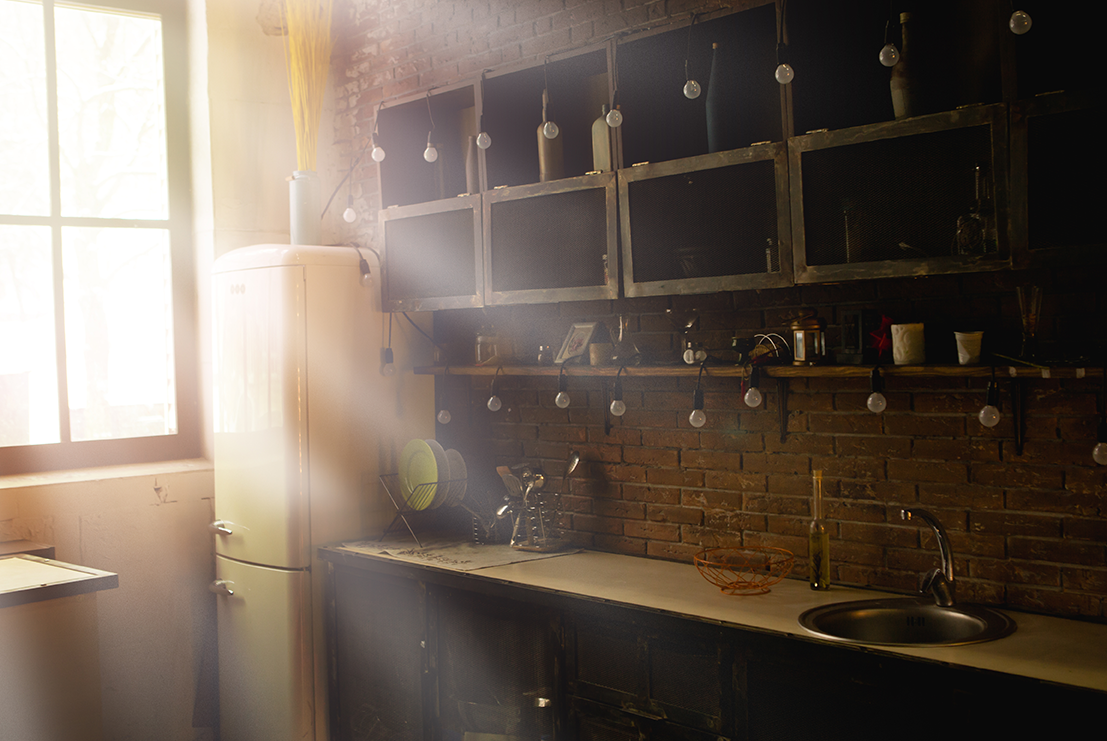A Short History of Useful Home Features
| By SCOTT EASTON | 0 Comments

For thousands of years humans have toiled with cooking over open fires, going outside in the cold to answer nature’s call, and dealing with less than ideal use of space in their homes. Over the past couple hundred years, spurred by the industrial revolution in the 1800’s, we have experienced a snowball effect of improved and modernized home features. But all things come from humble beginnings. Here’s a look at some useful home features, and how they have evolved over time.
Ovens
Ancient people first began cooking with open fires on the ground or in firepits. The Greeks used simple ovens for baking breads, and in ancient China, people developed clay stoves with holes in the tops for pots to set down in. It was not until the middle ages, that the first real oven was recorded as being created. In the 1700’s improvements were made to wood burning ovens, one design worth noting is the Castrol oven invented in 1735 by French architect François Cuvilliés, which allowed the fire in the oven to be completely contained and reduced smoke and heat from escaping. Throughout 1700’s and into the 1800’s, iron stoves were becoming more popular and ever improving. The Rumford stove invented around 1800 was a large stove for big working kitchens and though it had one fire as the source of heat, it allowed the temperature to be regulated for each pot individually. During the 1800’s, there were also coal and kerosene ovens, and in 1826, the first successful gas oven became available. By the 1920’s most households had gas ovens and stovetops. Though they were around as early as the 1890’s it wasn’t until the 1930’s that electric ovens started to compete with gas.
Windows
Windows are such a common feature, it’s easy to take for granted how good we have it. Homes were not always so bright, open, and well-insulated. In Roman times, glassmaking was fairly advanced, and many homes had windows. But as with many of the wonders of Rome, this craft was lost and during the “dark ages” windows were much smaller with no glass. As such, homes were much darker, with fires being the main source of light. People would use shutters to keep out the cold, and sometimes would use parchment or animal skins to cover window openings and protect from drafts but still allow some light to enter. Glassmaking began to make a comeback during the middle ages in Europe. In 14th century France, windows began to have what was called crown glass which came in small circles or could be cut into diamond shapes and put together in lead panes. By the 1500’s glassmaking was much more common, but glass was still a luxury for most. Only the wealthiest people could afford to have glass in their windows, and many only had it in the most important rooms. By the late 1600’s it was common to see glass window panes in a lattice style – the lattice was lead, thus giving these the name “leaded windows”. Wood framed, sash-style windows were also becoming more popular and it was around this time at the turn of the century that the weighted sash was developed which allowed the window to stay open without sliding. Over time, glassmaking was refined to produce clearer glass and the frameworks lightened and improved leading to a wide variety of styles and sizes seen in modern homes.
Pocket doors
This space-saving home feature was used in the late 1700’s in the famous home of Thomas Jefferson – Monticello. Tour guests can see the double pocket doors that slide out to separate the dining room and the tea room. This feature became quite common during the 19th century in Victorian homes as a practical way to save space as well as to close off rooms that were not in use or for privacy. Today, they are seeing a resurgence in popularity in townhomes and condos as they work well in smaller spaces. A new style of pocket door, an “open pocket door” is also being seen more and more in new homes. Also known as a sliding track door, you can see this option in many styles such as industrial/modern or barn/rustic.
Indoor Plumbing
Modern indoor plumbing, became popular during the late 19th century and has advanced leaps and bounds throughout the 20th century. But plumbing in general has a long and fascinating past. Around 1500-1000 B.C., the people of Crete (Greece) had created sewage disposal and underground drainage systems. The Roman Empire, during the period of 500-455 B.C. developed very advanced aqueducts, underground sewers, public baths, and marble fixtures. In 1596, the Godson of Queen Elizabeth I, Sir John Harrington, developed the flushing toilet with a seat, a bowl, and a water cistern – though it is said that the queen was afraid to use it. In 1829, the Tremont Hotel in Boston was the first of its kind to offer indoor plumbing for guests and in 1833, the White House added running water to the first floor. Then, in 1891, Thomas Crapper (yes, that is where the name came from!) patented his toilet design and revolutionized the modern concept of plumbing.
Medicine Cabinets
With the adoption of indoor plumbing, bathrooms became an essential part of the home. Bathrooms in the early 20th century were viewed as the center of personal cleanliness and good health, and it stood to reason that this would be the place to store medical and cosmetic supplies. This specialized cabinet hung on the wall in the bathroom and was the first type of storage in modern bathrooms.
Electricity
Although humans have known about the existence of electricity for a very long time, we have only been harnessing its power for about 250 years now. Everyone knows the story of Benjamin Franklin and his famous kite experiment, and it is his experiments that created a foundation for future scientists and inventors. Before we had electricity to light our homes and power our appliances, people salted and smoked meats to preserve them, washed laundry by hand, read books by candlelight, and used the fireplace to stay warm in the winter. Between the end of the 1800’s and the first decades of the 1900’s, cities and towns slowly became connected to electricity. The electric vacuum cleaner and washing machine were both invented in 1908 and the first refrigerator came along in 1913. Homes of wealthier folks had electricity before rural farms of course, but by the late 1930’s most everyone had electricity in the home.
Kitchen Islands
Oh, how we love our counter space! The idea of a kitchen island probably started in the late 19th century as a simple table in the kitchen used as a workspace. They really took off during the 1950’s however when open plan homes were becoming a thing. It was a great way to add extra storage and workspace in the kitchen while being connected to the rest of the house; mom could watch the kids in the living room, while preparing dinner.
Mudrooms
A mudroom is essentially a second entryway to a home, typically on the side or the back of the house and connected to the kitchen. The term emerged in the 1950’s with the appearance of secondary, less formal entryways, but in past centuries these spaces were found in rural area homes where the roads were unpaved, people were out on the farm or working in gardens, and footwear was perennially muddy. Today, these wonderful spaces act as a buffer from the elements and help us keep our homes cleaner and neater.
Garages
In its earliest form, the garage was a carriage house, where horses were stabled, and the carriages and tack were stored. As automobiles started to become more popular in the 1920’s, the more modern version of a garage took shape. At first, they still looked like carriage houses, but eventually started to integrate with the home more, both in style and functionality.
Here are some great references for further reading:
https://interiorsforfamilies.com/2017/03/21/island-style-history/
http://porch.com/advice/brief-history-kitchen/
http://www.oldhouseweb.com/blog/mystery-of-disappearing-pocket-doors/
https://www.oldhouseonline.com/articles/design-traditional-mudroom
http://www.whatitmeanstobeamerican.org/places/the-puritans-didnt-have-mudrooms/
https://www.johncflood.com/blog/general/history-of-plumbing-timeline
https://www.qssupplies.co.uk/history-of-plumbing-timeline.html
https://visual.ly/community/infographic/history/history-garage
https://didyouknowhomes.com/2015/02/12/the-history-of-garages/
http://americanhistory.si.edu/object-project/household-hits/medicine-cabinet
http://www.cabinetmagazine.org/issues/60/kastner_day.php
https://prezi.com/8upfjjfeno1-/the-evolution-of-the-stove/
https://www.thoughtco.com/history-of-the-oven-from-cast-iron-to-electric-1992212
http://blog.hhgregg.com/history-of-the-oven/
https://www.apartmenttherapy.com/quick-history-windowsretrospect-165008
https://www.clickenergy.com.au/news-blog/life-before-electricity/









